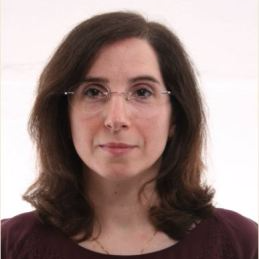Photochemistry of Organic Molecules and of Matrix-Isolated Reactive Intermediates: Themed Issue Honoring Professor Rui Fausto for His Contributions to the Field
A special issue of Photochem (ISSN 2673-7256).
Deadline for manuscript submissions: closed (15 October 2022) | Viewed by 26058
Special Issue Editors
2. Faculty of Sciences & Letters, Department of Physics, Istanbul Kultur University, Istanbul, Turkey
Interests: photochemistry; molecular cryo- and biospectroscopy; quantum chemistry; molecular structure; photophysics; chemometrics
Special Issues, Collections and Topics in MDPI journals
Special Issue Information
Dear Colleagues,
This Special Issue of Photochem is dedicated to Professor Rui Fausto for his contributions to our understanding of the photochemistry of organic molecules and of matrix-isolated reactive intermediates.
Professor Rui Fausto was born in Coimbra, Portugal, in 1961. He graduated from the University of Coimbra in 1984 and received his PhD in Chemistry (Molecular Spectroscopy) from the same university in 1988. He spent a post-doctoral period in the National Research Council of Canada, Ottawa, after which he returned to Coimbra where he initiated his research activities on molecular spectroscopy and computational chemistry. In 1994 he established the Laboratory for Molecular Cryospectroscopy and Biospectroscopy (LMCB), within the scope of the European Program PRAXIS XXI. This infrastructure has been growing since then and it now constitutes one of the leading research units at world scale in the field of low-temperature spectroscopy and photochemistry, centering its research on the topics of matrix-isolation infrared spectroscopy, the spectroscopy and photochemistry of biologically relevant systems, and the structure and reactivity of chemical intermediates.
Rui Fausto is Full Professor and Head of the Chemistry Research Centre of the Department of Chemistry of the University of Coimbra, Portugal. He is also the Coordinator of the Molecular Spectroscopy and Thermodynamics Research Group, co-Coordinator of the Research Group on Theoretical and Computational Chemistry of the Coimbra Chemistry Centre, and Director of the Laboratory for Molecular Cryospectroscopy and Biospectroscopy. He is a member of the European Academy of Arts, Sciences and Humanities, American Chemical Society, and European Photochemistry Association; President of the permanent Steering Committee of the EUCMOS (European Congress on Molecular Spectroscopy) series of meetings; and Editor-in-Chief of the Journal of Molecular Structure (Elsevier, Amsterdam). He belongs to the editorial boards of ten additional scientific journals. Along his career he has occupied many different positions in administration and scientific management in the University of Coimbra, including the presidency of the Academic Council and the vice-presidency of the Scientific and Directive boards of Faculty for Sciences and Technology as well as the presidency of the Institute for Interdisciplinary Research. He was also the President of the Physical-Chemistry Division of the Portuguese Chemical Society. In 2002 he received the RSC Journals Grant for International Authors Prize and in 2004 and 2005 he was one of the twelve Portuguese scientists awarded the Excellence Prize of the Portuguese Science Foundation. He is an author or editor of about 50 scientific books and author of ca. 500 scientific papers in prestigious peer-reviewed chemistry journals and book chapters. He has been the coordinator of many national and international research projects, which as a whole collected several millions of euros of funding, and has organized more than 50 international scientific congresses.
Rui Fausto has pioneered the use of vibrational excitation to induce chemical reactivity in organic molecules under matrix-isolation conditions (together with colleagues from Helsinki, and lately with the collaboration of other scientists all around the world), which appears as a powerful and elegant strategy for the manipulation of chemical structures. His work on both the infrared and ultraviolet induced photochemistry of reactive intermediates has opened new avenues for the understanding of the chemical reactivity of organic compounds, and his more recent work on quantum mechanical tunneling (including heavy atom tunneling) has been establishing new paradigms in chemical reactivity.
Rui Fausto has also been a notable tutor of many young scientists, which have permanently been receiving his dedication and stimulus. Besides his academic and scientific achievements, he has other interests that range from music to painting and the defense of human rights.
Having being working closely with Professor Rui Fausto for several years, we are very pleased to give all his colleagues and friends the opportunity to celebrate his scientific career by contributing to this Special Issue dedicated to honoring his achievements in these fields of research.
Prof. Dr. Gulce Ogruc Ildiz
Dr. Licinia L. G. Justino
Guest Editors
Manuscript Submission Information
Manuscripts should be submitted online at www.mdpi.com by registering and logging in to this website. Once you are registered, click here to go to the submission form. Manuscripts can be submitted until the deadline. All submissions that pass pre-check are peer-reviewed. Accepted papers will be published continuously in the journal (as soon as accepted) and will be listed together on the special issue website. Research articles, review articles as well as short communications are invited. For planned papers, a title and short abstract (about 100 words) can be sent to the Editorial Office for announcement on this website.
Submitted manuscripts should not have been published previously, nor be under consideration for publication elsewhere (except conference proceedings papers). All manuscripts are thoroughly refereed through a single-blind peer-review process. A guide for authors and other relevant information for submission of manuscripts is available on the Instructions for Authors page. Photochem is an international peer-reviewed open access quarterly journal published by MDPI.
Please visit the Instructions for Authors page before submitting a manuscript. The Article Processing Charge (APC) for publication in this open access journal is 1000 CHF (Swiss Francs). Submitted papers should be well formatted and use good English. Authors may use MDPI's English editing service prior to publication or during author revisions.
Keywords
- photochemistry
- IR-induced chemistry
- organic molecules
- reactive intermediates
- conformationally dependent reactions
- matrix-isolation
- infrared and Raman spectroscopies
- quantum mechanical tunneling
- theoretical and computational organic chemistry
- applied biospectroscopy





